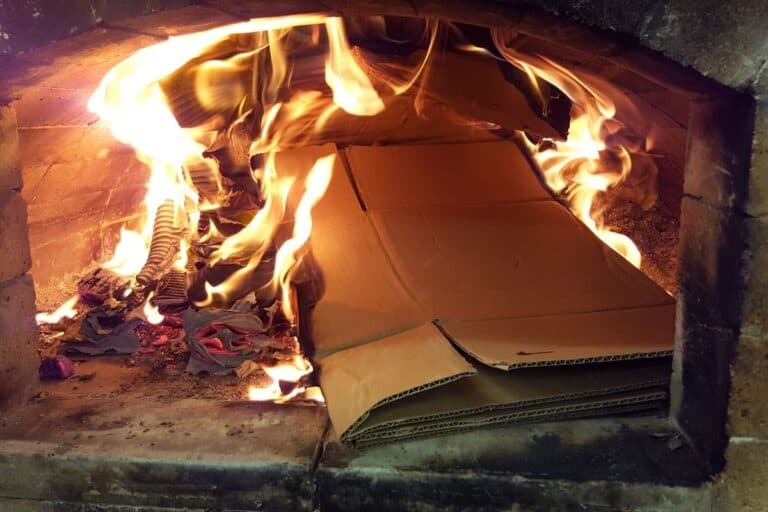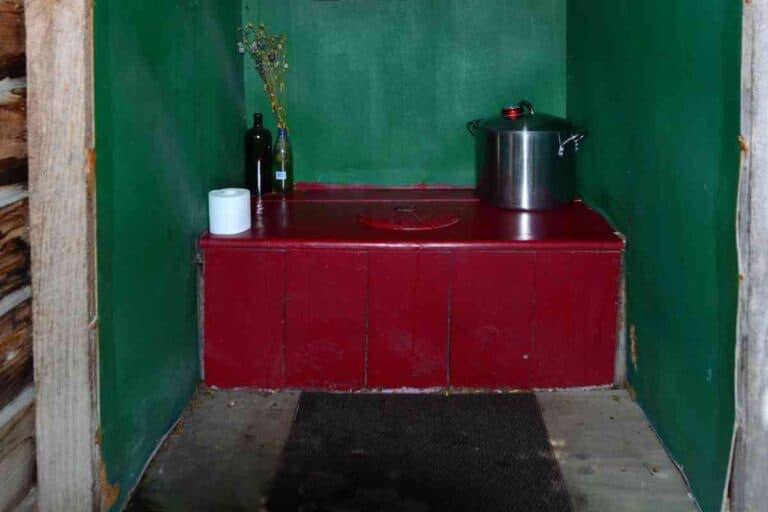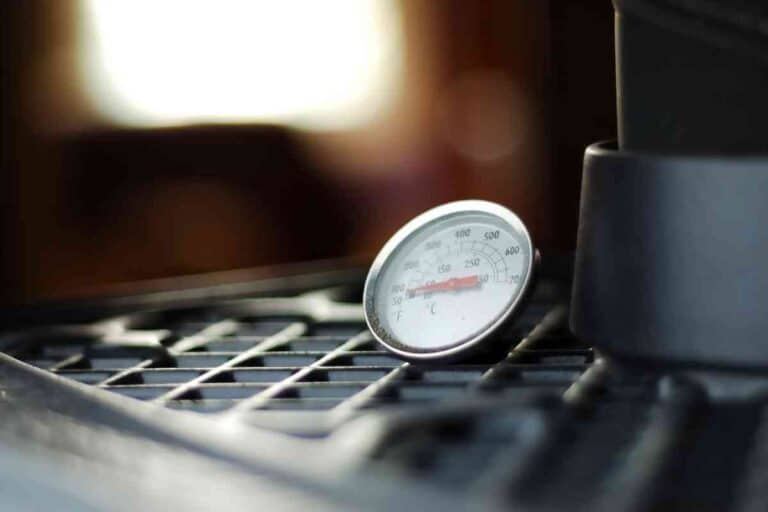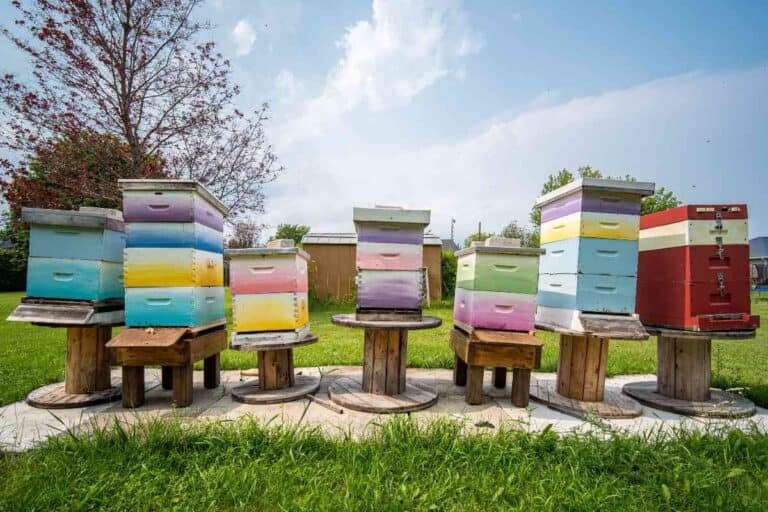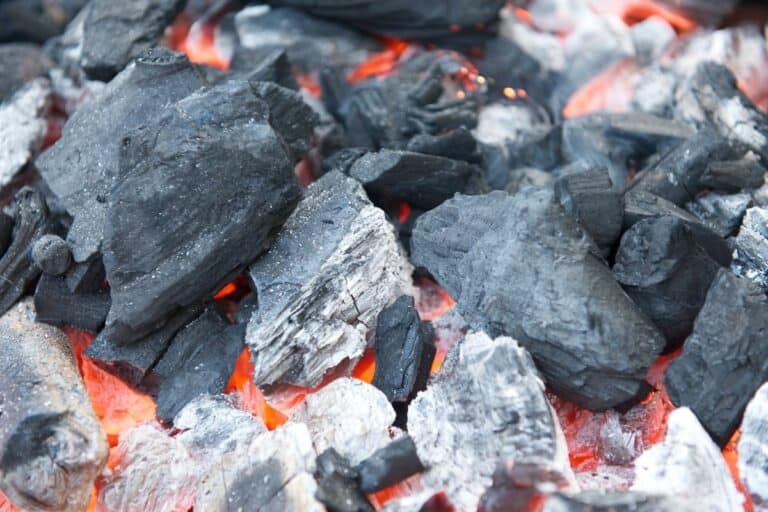Where Is Self-sufficiency Most Realistic?
Self-sufficiency is a lifestyle that has been practiced for millennia. In fact, it used to be the norm brought by necessity. Today this is no longer necessary for most of us, but it is still the goal of many – and for good reasons.
Being self-sufficient means having independence and autonomy over your life and land. It’s about living in harmony with nature rather than being at odds with it. There are many definitions of self-sufficiency, but they share one thing in common: being able to provide oneself with the necessities without relying on others for help. It also entails a high level of personal responsibility, which some might find overwhelming or even impossible, so think carefully before committing to this path.
You can be self-sufficient almost everywhere, as is evident by the fact that people live all around the world. But some places are much better suited to it than others.
The best place to live if you want to be self-sufficient is somewhere where you can grow your own food, keep animals for meat, eggs, and milk, generate your own power with renewable energy sources (water turbines, windmills, etc.), and regulate the indoor temperature with limited energy needs.
Speaking of location – land should preferably be affordable while still having fertile soil and plenty of water. And legislation should encourage self-sufficiency or at least not restrict it.
If you want to live more sustainably and become more independent, but you’re not sure where to go, then this article will help you find the best place to do so. We’ll go through what identifies these locations as well as how you can prepare to live there.
What Characterizes a Good Location for a Self-sufficient Lifestyle?
First, let’s look at what makes a location good for self-sufficiency. The location must be able to provide the necessities of life: food, water, fresh air, and warmth. Then there are the less essential but usually important factors of power generation, materials for construction, and land affordability to consider.
Let’s look at each in turn…
Growing Your Own Food
Food production is usually the first and most important consideration for anybody looking to become self-sufficient. A location with sunlight, fertile soil, clean water, and moderate temperatures is ideal for growing various crops.
You’ll need to be able to grow enough food for everyone living on your homestead as well as for your livestock (pigs, chickens, cows, etc.) – and be able to store them safely for consumption later when needed. The location you choose should be able to sustain your entire family.
One factor is how much land you will have available. The more land you have access to, the better off you’ll be. While you can technically become self-sufficient on less than one acre, your choice of crops will be limited. To have space for a wider selection of food, you’ll need at least several acres. You can read more about how much land you need for self-sufficient living here: This Is How Much Land You Need to Be Self-Sufficient
Another factor is the type of soil. If you’re going to have crops, they’ll need healthy soil for nutrients and water retention. A nutrient-poor or too clayey soil will limit your options significantly and make farming much harder. There are ways to improve soil quality, but it often takes a lot of time and effort to do so.
Climatic factors also play a prominent role in growing crops. For example, regions with too much rainfall can cause soil erosion or flooding, which can be especially harmful to self-sufficient lifestyles as you depend on stable production from the land. That said, there are ways around this as well – either with raised beds or by creating water retention reservoirs.
The next factor is temperature. Most crops rely on daylight for optimal growth. Growing plant crops indoors is possible, but it requires a great deal more energy consumption and effort than simply planting them outside. Starting a homestead in a northern climate will limit your growing period to about six months as the days are noticeably shorter in autumn and winter.
On the other hand, if the climate is too hot, crops will wilt and die from the scorching sun. That doesn’t mean you can’t homestead and grow heat-tolerant plants in the desert, as this article explains, but your selection of crops will be limited. The ideal location for growing your own crops is a subtropic or southern temperate climate with enough rain – not too wet and not too dry.
In summary: Fertile soil, sunlight, adequate rainfall, and mild temperatures are the key factors for being able to grow your own food throughout most of the year. In the United States, the states of Florida, Texas, Louisiana, Georgia, South Carolina are some of the best locations to grow your own food.
Keeping Animals
Like plants, animals also need certain factors to be able to survive and grow. Generally, there are fewer key factors for animals because, unlike plants, they can survive to some extent in most climates. However, two relevant considerations for livestock-keeping are space and food availability.
Space and Food Availability
Livestock needs a lot of space to roam around. While most animals can be restricted to a relatively small area, as long as you buy feed from the store, self-sufficient homesteaders need much more space for pasture and growing their own feed.
Chickens and rabbits require the least amount of space. Rabbits can be kept in hutches and cages, while chickens can be kept in chicken tractors. You can also let your chickens roam (mostly) freely around your property where they can forage a large part of their own food. Keeping ducks also requires relatively little space, while geese take up more room.
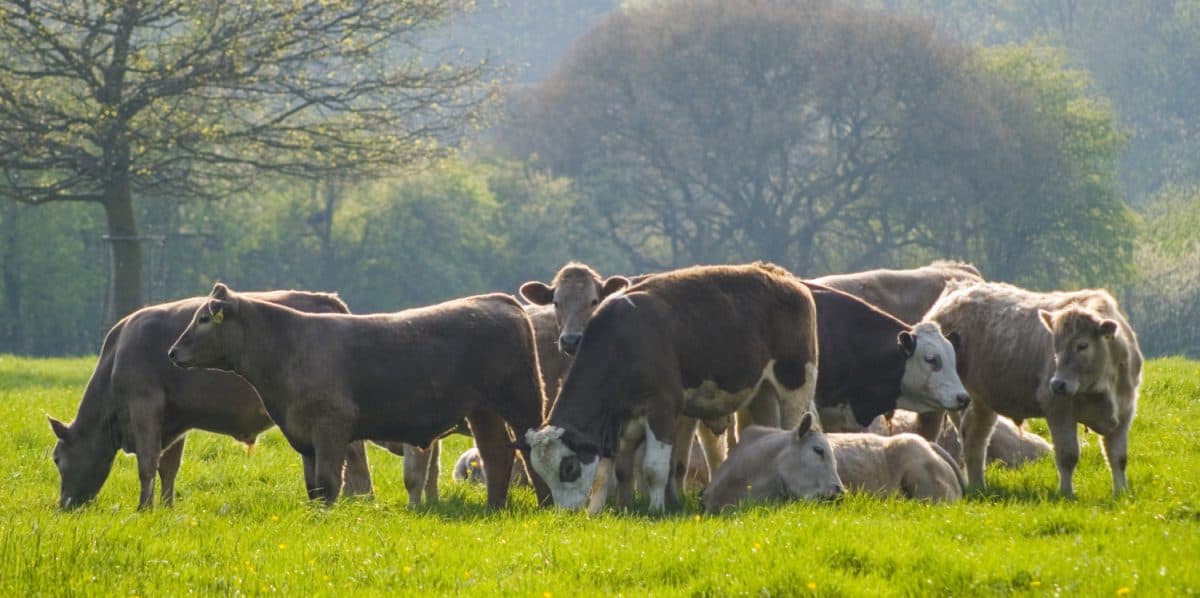
Larger animals necessitate more space – including pigs, goats, cows, and sheep. Pigs need about 1,200 square feet per head to live on if you use rotational pasturing. Goats require even more room, and cattle need about 2 acres of land per head. This will limit the number of animals you keep depending on the amount of land available.
Next, not all pasture is created equal. Some soil is better for grass growth than others, and rich pasture land will provide a constant supply of food for your geese and four-legged animals without requiring you to purchase feed from the store or grow acres of grain. You’ll either need a significant amount of low-quality ground or fewer acres of nutrient-rich soil if you want to pasture.
Predators
One other consideration is predators – both four-legged and avian. Generally, smaller livestock is more vulnerable to predators than larger livestock. Chickens, rabbits, and ducks are all at risk from a wide range of predators, such as hawks, eagles, owls, foxes, coyotes, or even stray dogs.
While larger mammals such as sheep, pigs, and goats are less vulnerable, they are not entirely safe. A flock of hungry wolves or coyotes is just as deadly for a pig as for a small chicken. Cattle and horses are not safe from predators such as cougars and wolves, but even bobcats and lynx can prey on cattle.
While there are predators in every US state and all over the world, there are some regions where the threat of larger predator attacks is higher. Especially where coyotes are abundant. Coyotes account for 40% of all cattle losses due to predator attacks in the United States. Comestic dogs also account for a significant number of livestock losses.
While some locations are more at risk than others, predator attacks are only responsible for a minimal amount of livestock loss. That being said, all livestock owners should take measures to protect their herds and flocks from predators.
In summary, livestock keepers require relatively large amounts of space for their animals, as well as pasture land with good soil quality. Chickens and rabbits can be kept with relatively little space and require relatively little feed. Larger animals such as sheep, goats, cows, pigs need much more space and will eat a lot – either by grazing or eating feed. If you plan on keeping larger livestock, you should consider where your property is located and how much land you will need.
Power Generation
Electricity is important for many tasks on a homestead – pumping water, remediation, lighting up the night, etc. No matter how small or large your house and property are, you probably need some sort of power generation to meet the minimum energy requirements of a self-sufficient homestead.
One should be aware that generating your own electricity usually means you will have to be mindful of your energy use. Additionally, you will have to maintain your power generation system, which means you should make sure the equipment is easily accessible for repairs and regular cleaning.
Solar Power
Many self-sufficient homesteads use solar panels to generate electricity. There are different kinds of solar panels, with some being better suited for smaller properties or certain applications than others. Size is not always an indicator of power generation capabilities.
If solar energy is your preferred source of power, you will need a minimum of sun hours per day, and the panels should be angled to receive maximum sunlight during these hours. While solar panels can be used for supplementary power in northern climates, the sun hours decline too quickly during the fall to be a dependable source of power. Even with a fairly sizable battery bank, the lack of sun hours will result in lower power output, and there may be some periods during the winter where you simply don’t have enough solar energy to power your devices.
To get as much out of your solar panels as possible, the best states to live in are either the southwestern deserts (Arizona, New Mexico, Nevada) or Texas. California, Colorado, and Oklahoma are also good places for solar power.
Wind Power
If you live in the north, wind power could be a better option for reliable electricity generation, depending on your location. If the wind is fairly reliable, you can generate power all year round. Moreover, with wind turbines, you can expect to generate at least some power during the night – when solar panels don’t work.
If you decide to go with wind turbines, you should look for a property that is located in an area with reliable wind resources. If you’re lucky, your property might even have a nearby hill where the wind is stronger. If possible, you should choose a site that is high above surrounding trees and buildings so that you can maximize the wind passing through your turbine blades. Open plains and grasslands are also good locations.
In terms of location, the windiest states are in the West and the Great Plains. These states have very high average wind speeds. States like Wyoming, Michigan, Montana, Nebraska, and South Dakota. Alaska also has strong average wind resources, although this varies a lot by region.
In short, the key point to remember with any kind of electricity generation is that you should be aware of your daily power needs before taking on such a project and ensure to adapt your power systems to the local conditions. Otherwise, you will end up with a system that is too large (and expensive) or too small for your needs.
Water Resources
We have already touched upon this subject in regards to watering your crops, but it’s important to discuss again the importance of water in a self-sufficient lifestyle. You will need enough water to meet all your needs. Not just watering your plants and your animals but also for drinking, cooking, cleaning, bathing, etc.
Rainwater can be a great resource, and some homesteaders utilize it exclusively. Rainwater is not innately unsafe to drink, but it’s important to manage it properly to avoid stagnant water and other contaminants. If you live in a dry location, you will need fairly sizable tanks so that you can capture enough rainwater to meet your needs.
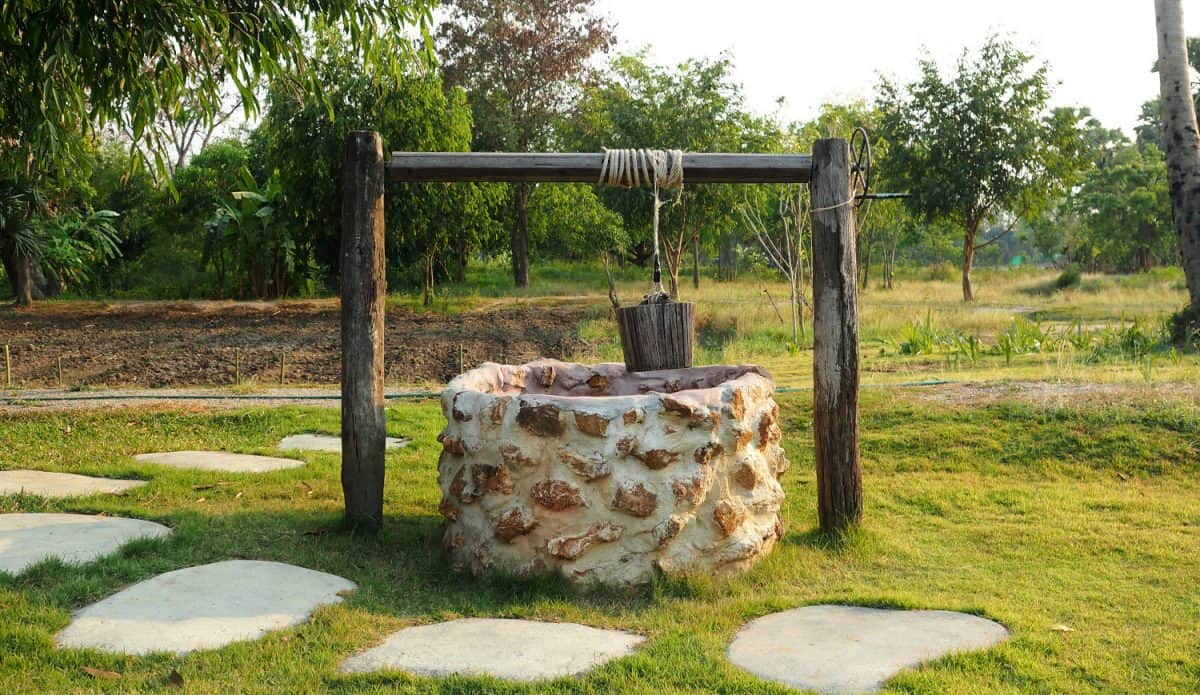
A well is another viable option for water supply. Wells take up less space, and you won’t have to bury large tanks or plastic cisterns. However, wells are not infallible. Wells can run dry during droughts.
In terms of costs, a comprehensive rainwater harvesting system typically costs around $9,000 while the cost of a well varies widely from just $1,500 to $12,000 or more depending on depth, soil composition, and other factors. It is usually easier to estimate the costs of a rainwater harvesting system because you often don’t know the debts of your groundwater until you drill the well.
Temperature Control
Depending on where you live, temperature control is either about staying warm or staying cool. Staying warm is unquestionably the easiest to do as an off-grid homesteader.
Why? Because staying cool typically means having an air conditioner which requires a lot of electric power – often, too much power for solar panels to be an economically viable option. At least if you live in a medium-to-large house. If you live in a very hot environment, you may be better off building an Earthship or other structure that utilizes mass and the principles of passive solar heating.
Heating a home also requires a lot of energy, but in cold climates, heating is typically achieved by burning wood. A wood-burning stove is an excellent self-sufficient option if you can grow your own firewood. However, in order to be self-sufficient in firewood, you will need to dedicate at least 1 acre of woodland, and usually more. The good news is that a forest can have more than just that one purpose. For example, you can raise pigs or chickens in the forest, or you can hunt wild game.
In short, regulating indoor temperature is possible anywhere, but it’s important to consider whether you prefer to regulate it down or up. However, the ideal location is a mild climate where you don’t have to expend too much energy to keep your home at a comfortable temperature. An ideal state is California, where the winters are mild, and summer temperatures rarely exceed 80F in most regions. Georgia, Florida, and some parts of Texas also meet these requirements.
Affordability
A homesteader seeking self-sufficiency will generally need from just a few acres to a few hundred acres of decent to high-quality farmland. There are a number of factors that influence how much you will pay for that acreage, including location, water availability, and zoning laws.
Regions with fewer people tend to have higher acreage prices because there are fewer bidders on each piece of property available.
However, even knowing this won’t necessarily help you determine whether a particular plot of land is affordable. For example, some states are more rural than others, but it’s also important to consider how much income the locals earn on average.
The best place to buy lots of land is probably in the American West and Midwest, where it’s relatively inexpensive, and there is plenty of fertile ground. The states with the lowest average price per acre are Wyoming, New Mexico, Nevada, South Dakota, and Montana.
Regulatory Considerations and Taxes
The ideal state would also have laws that don’t prohibit self-sufficient lifestyles. For example, some local governments require you to get permits before collecting rainwater or even building a greenhouse, while others are much less restrictive. Building your home could also require permits depending on the size of your home or how it’s built.
While some states definitely are more conducive to self-sufficient lifestyles than others, it often comes down to the local authorities. Some counties or townships do not have zoning laws that prohibit certain activities. In other places, you may be able to get by without a building permit at all.
Your best bet is to look for relatively isolated counties in less restrictive states. These places tend to have fewer restrictions on zoning and land use.
Besides zoning regulations, you should also consider property taxes. Some states have higher property taxes than others, and you should consider this when budgeting for your land. Life as a self-sufficient homesteader is more pleasant without a large tax bill on your home.
In Summary
Summarizing the many factors involved in determining the best place to live if you want to become self-sufficient really depends on how much quality land you can afford to purchase and what kinds of restrictions your local county or township puts on you.
Some states tick more of the boxes that are necessary for self-sufficient living. One that particularly stands out is Texas. Texas has a relatively mild climate, fertile soil, lots of sun, and few regulations.
It’s a large state with a diverse ecosystem that includes deserts, plains, and forests. Remote homes are affordable. Property taxes are steep, but they may be reduced with an Ag exemption.
There are also plenty of available acres for those who want to live off-grid or want to be as self-sufficient as possible. And Taxes has several unincorporated areas with very few zoning regulations and building codes.
Oklahoma and Arkansas both share similar advantages as Texas: They’re relatively inexpensive, have plenty of fertile soil for growing crops, and reasonable zoning laws. Oklahoma is a great place to set up a wind turbine. It also has a diverse ecosystem that includes many different environments, so there’s a good chance you could find a property where you’ll be able to grow a wide variety of crops. And lastly, property taxes in both states are lower than in Texas.
I’d also like to add Florida as an honorable mention because it has a great environment: mild climate, sun, and sufficient precipitation. Despite having a very high population density, there still is a diverse ecosystem. The temperature is near perfect for cultivating many different crops, and you rarely need to spend energy on regulating indoor temperature.
But, property prices in Florida are very high, and there isn’t much property available. I included this state for people who will enjoy the weather and perhaps don’t mind owning a small self-sufficient property based around high-efficiency concepts such as aquaponics and vertical farming.
It’s important to note that there are great regulatory and environmental variations within most states. Just because a state’s overall opportunities for self-sufficiency are lower, that doesn’t mean you won’t be able to find a suitable location. And just because a state is more conducive to self-sufficiency, that doesn’t mean there aren’t places within it where living off the grid is next to impossible.
At the end of the day, it’s important to do your research and choose a place where you want to live. But doing your research and considering all the factors I’ve mentioned here will increase your chances of finding a good property in which to set up your self-sufficient homestead.


